Cir-Q-Lar
Cir-Q-Lar Playing Cards. In 1929 John Waddington Ltd commenced the production of circular cards and these were very popular.
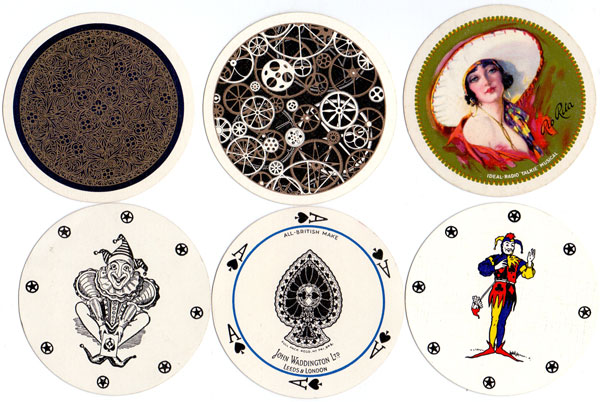
Cir-Q-Lar Playing Cards
Round and oval playing cards were known in Europe as early as the fifteenth century, and examples by the Master ‘PW’ and others survive. These early round cards were finely engraved miniature works of art, with non-standard suit symbols such as flowers or small animals. In India round cards are the normal shape. They are round, painted or lacquered discs of thin wood, cotton fibre paper or ivory which may contain up to eight or ten suits. Round playing cards were also produced in the USA in 1874 by I. N. Richardson and subsequently by The Globe Card Company in 1878. Whilst they were advertised as easier to hold, no corners to break, greater visibility, etc., they never achieved much popularity.
A circular pack was published in Australia in late 19th century titled “Sutherland's Circular Coon Cards”. See more►
In 1929 John Waddington Ltd (Leeds & London) commenced the production of circular cards and these were very popular. They were introduced to the USA where sales were beyond expectations.
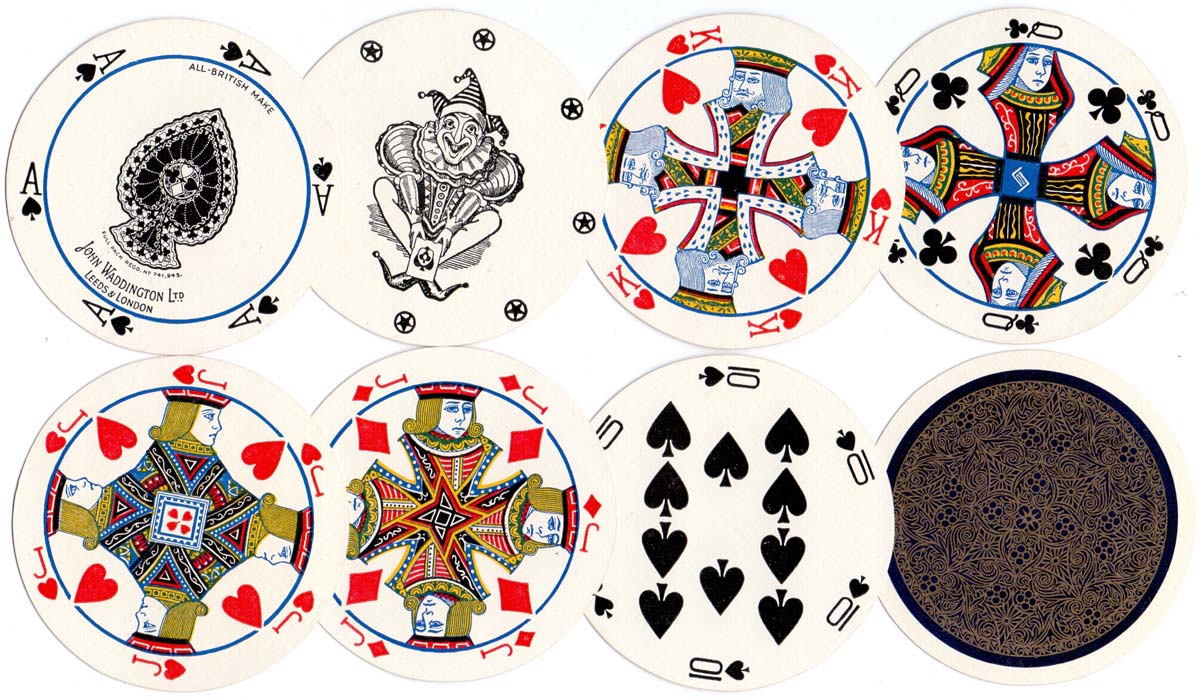
Above: first edition of ‘Cir-Q-Lar’ playing cards manufactured by John Waddington Ltd c.1929. The box refers to Registered No.741-945. (click image to see more)
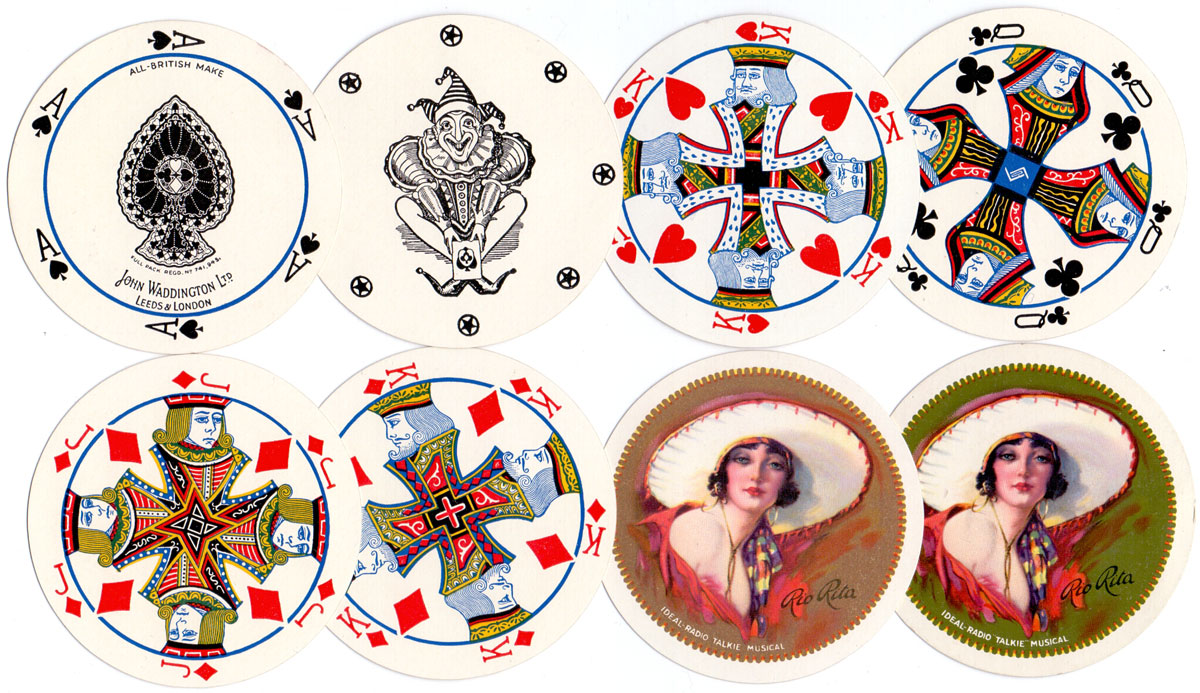
Above: RIO RITA radio talkie-musical double set of ‘Cir-Q-Lar’ playing cards manufactured by John Waddington Ltd in a padded box, c.1929.

Above: ‘Rondo Circular’ playing cards manufactured by John Waddington Ltd. The ace of spades now has a copyright symbol. Image courtesy Matt Probert.
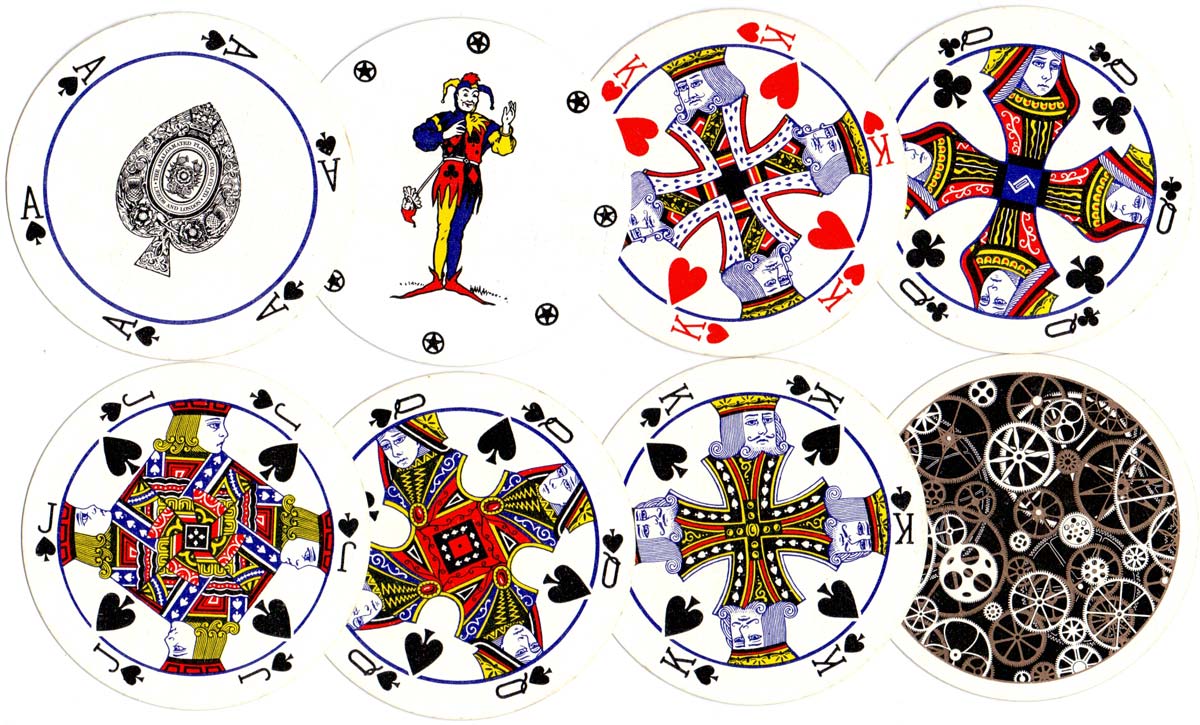
Above: ‘Rondo Circular’ playing cards manufactured by The Amalgamated Playing Card Co., Ltd c.1970. (click image to see more)
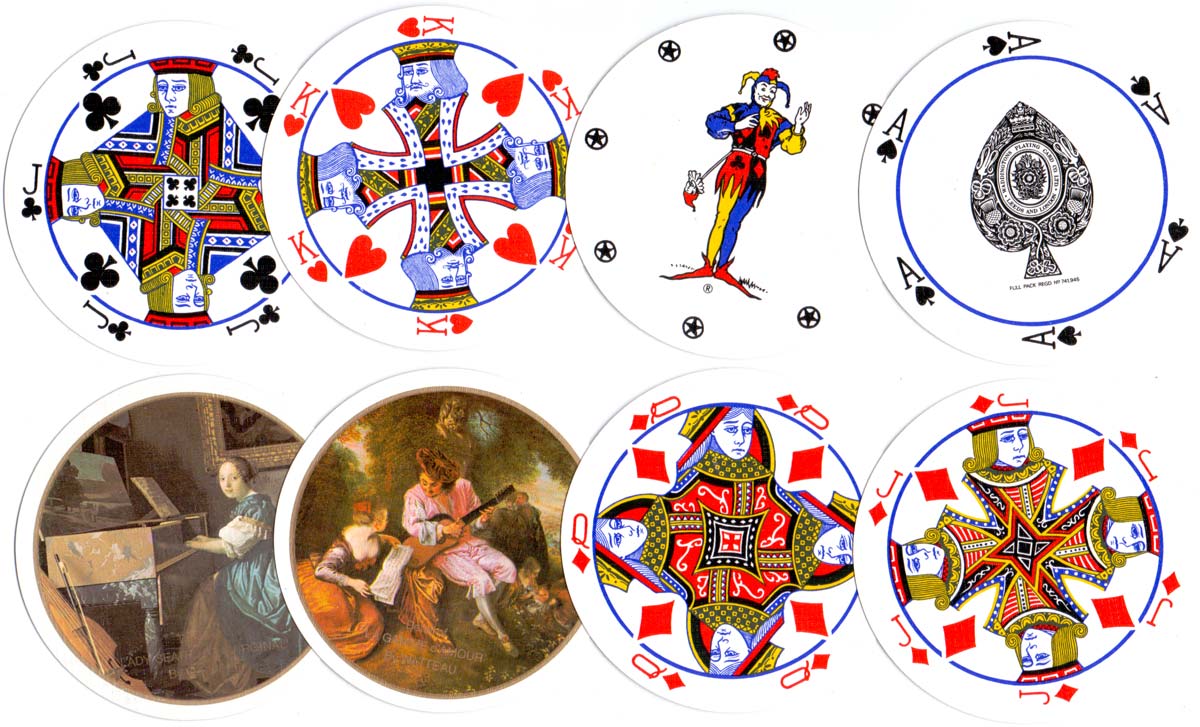
Above: Double boxed set of Waddington's Circular playing cards with details from paintings by Vermeer and Watteau on the reverse, 1980s. (click image to see more)
See also: Sutherland's Circular Coon Cards • Master PW Circular Playing Cards • VelCap Circular Playing Cards.

By Simon Wintle
Member since February 01, 1996
I am the founder of The World of Playing Cards (est. 1996), a website dedicated to the history, artistry and cultural significance of playing cards and tarot. Over the years I have researched various areas of the subject, acquired and traded collections and contributed as a committee member of the IPCS and graphics editor of The Playing-Card journal. Having lived in Chile, England, Wales, and now Spain, these experiences have shaped my work and passion for playing cards. Amongst my achievements is producing a limited-edition replica of a 17th-century English pack using woodblocks and stencils—a labour of love. Today, the World of Playing Cards is a global collaborative project, with my son Adam serving as the technical driving force behind its development. His innovative efforts have helped shape the site into the thriving hub it is today. You are warmly invited to become a contributor and share your enthusiasm.
Related Articles

Tangle Foot Ale
Badger Brewery Tangle Foot strong ale advertising pack.

Scientific Whist
“Scientific Whist” : standard cards with instructions for play on the faces by Chas Goodall & Son, 1...

Agent Provocateur
Branded lingerie collection in a pack of pin-up playing cards.

Nimbus playing cards
Mike Steer’s weather-themed pack with suits in four colours and backs for cardistry.

Agatha Christie and Playing Cards revisited
Agatha Christie uses card-play as a primary focus of a story, and as a way of creating plots and mot...

The Decadent Deck
Studies in the eroticism of the female body by Inge Clayton.

Historic Shakespeare
“Historic Shakespeare” playing cards featuring Shakespearean characters by Chas Goodall & Son.

Copechat Paramount Sorting System
Preserving the past: a specimen deck showcasing edge-notched cards and their ingenious sorting syste...

Heartsette by Herbert Fitch & Co, 1893
A glimpse into a busy print and design office in late Victorian London.

Batman® playing cards
Batman playing cards published by InterCol of London 1989.

Can You Believe Your Eyes?
“Can You Believe Your Eyes?” playing cards featuring visual illusions & other oddities.

Pastime Playing Cards for the Blind
The “Pastime” Playing Cards for the Blind manufactured by Goodall & Son Limd., c.1910.

Songs with Flute accompaniment
Eighteenth century English engraved cards with music for voice and flute.

Love Tests
Vintage novelty “Love Test” cards of a slightly saucy nature but all in good fun!

Ben 10 playing cards
Characters from the American animated television science fantasy series Ben 10.

Doctor Who Trump Card Game
Game for two players in which Doctor Who and the Legendary Legion join battle with the Alien Hordes....
Most Popular
Our top articles from the past 28 days

